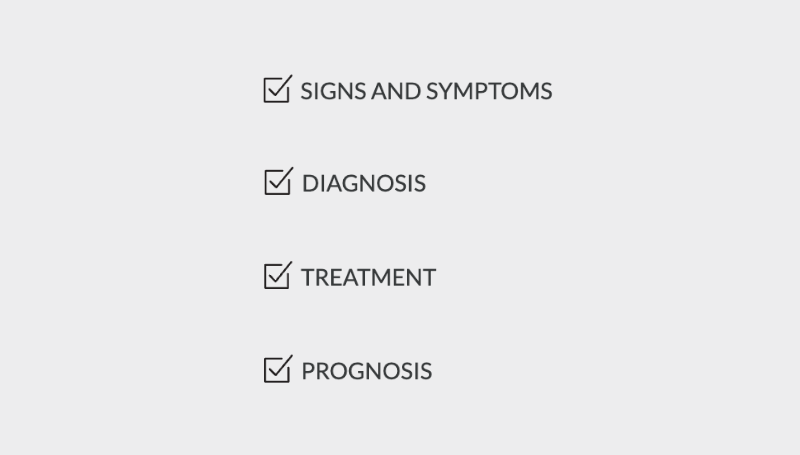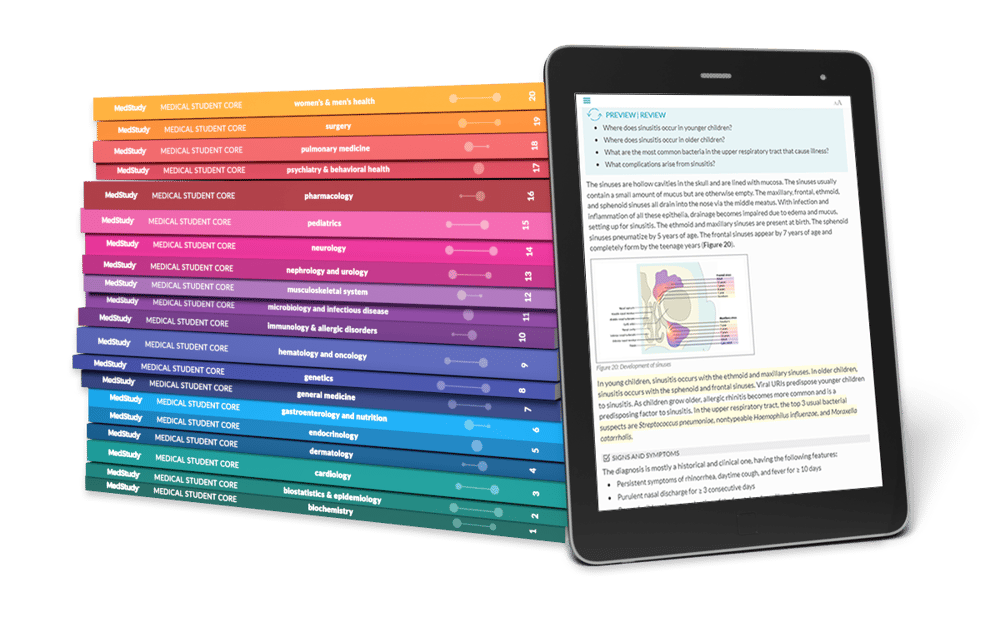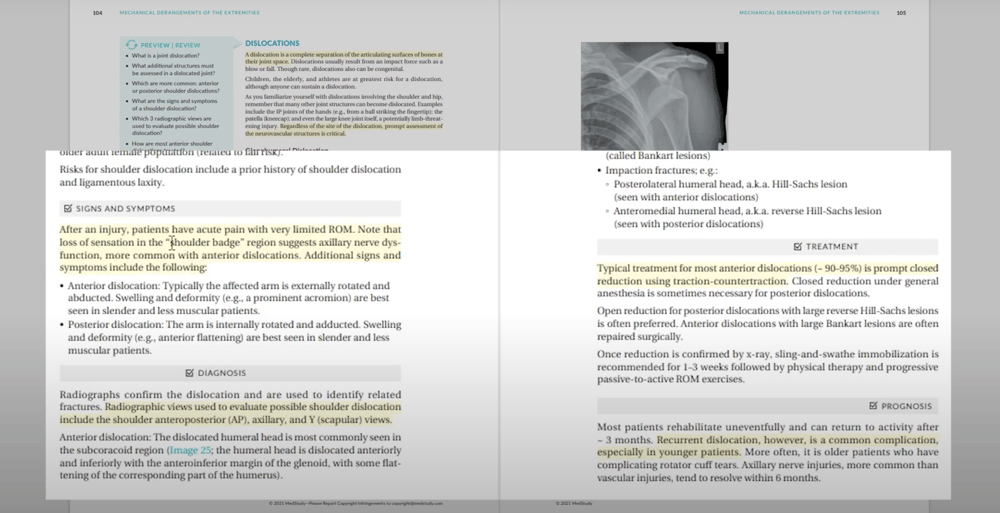Dx Any Disease by Studying These 4 Things in Your Med Student Core

Key Points:
- One of the best features of the Medical Student Core is how easy it is to find the 1) signs and symptoms, 2) diagnosis, 3) treatment, and 4) prognosis of diseases and illnesses.
- For your Step 1 exam, it's important to focus on the basic science portions of the Core books. This includes the signs and symptoms (how a patient is presenting) and diagnosis.
- For your Step 2 exam, it's important to focus on the clinical portions of the Core books. This includes treatment and prognosis.
- In clinical topics in the Medical Student Core, special headings (the grey boxes labeled with what's being discussed) help you navigate to the signs and symptoms, diagnosis, treatment, and prognosis of diseases and illnesses quickly.
One of the best features of the Medical Student Core is how easy it is to find the signs and symptoms, diagnosis, treatment, and prognosis of diseases and illnesses. Focusing on these different topics are more important during different times in your med school journey (for example studying signs and symptoms is more important early on, and studying treatment and prognosis is more important later).
We want to make sure you're as prepared as possible for not only exams, but to be the best physician that you can be for your patients in the future. Here's a breakdown of what this feature from our Medical Student Core is, and how it helps you study stronger.
What is the Medical Student Core?
Medical Student Core books in digital and print formats
The MedStudy Medical Student Core consists of 20 booklets in alphabetical order that cover the subjects you'll find in the Step 1 and Step 2 USMLE® Exam Content Outlines, not to mention, what you'll see in med school and your coursework.
The medical content in each booklet is organized with foundational, basic science content first (for example: anatomy, embryology, physiology) and that's followed by clinical topics. So, if you're studying basic science, you should focus more on the foundational content at the beginning of each booklet, and then focus on only particular aspects of the clinical information presented later on.
And, if you're studying clinical knowledge, you may want to review some foundational content when needed, but should mostly focus on the clinical aspects in the later parts of the booklets.
How are signs and symptoms, diagnosis, treatment, and prognosis presented in the Medical Student Core?
Signs and symptoms, diagnosis, treatment, and prognosis presented in the Medical Student Core
In clinical topics, special headings (the grey boxes labeled with what's being discussed) help you navigate the information you need quickly. So, if you want to read about a specific abnormal process or diseases' signs and symptoms, diagnosis, treatment, and prognosis, this information is quick and easy for you to find.
These headings in the Medical Student Core makes it easy to go in and find exactly what you need to hone in on. It also breaks up the content and allows you to more easily digest the content.
Start a free trial of the Medical Student Core now and experience the full Musculoskeletal section FREE for 30 days to see exactly how easy it is to identify the signs and symptoms, diagnosis, treatment, and prognosis of diseases discussed in the section.
What should I focus on for Step 1?
For your Step 1 exam, you'll want to focus more on the basic science portions of the Core books. This includes signs and symptoms (how a patient is presenting) and sometimes diagnosis.
What should I focus on for Step 2?
For your Step 2 exam, you'll want to focus more on the clinical portions of the Core books. This includes things like treatment and prognosis.
Want to test out the Medical Student Study Strong System? Start a free trial now and get the full Musculoskeletal section for 30 days.
-gif.gif) An inside look at the Musculoskeletal section in the Medical Student Core
An inside look at the Musculoskeletal section in the Medical Student Core
*The United States Medical Licensing Examination (USMLE®) is a joint program of the Federation of State Medical Boards (FSMB®) and the National Board of Medical Examiners (NBME®). None of the trademark holders are affiliated with MedStudy
Related content:




